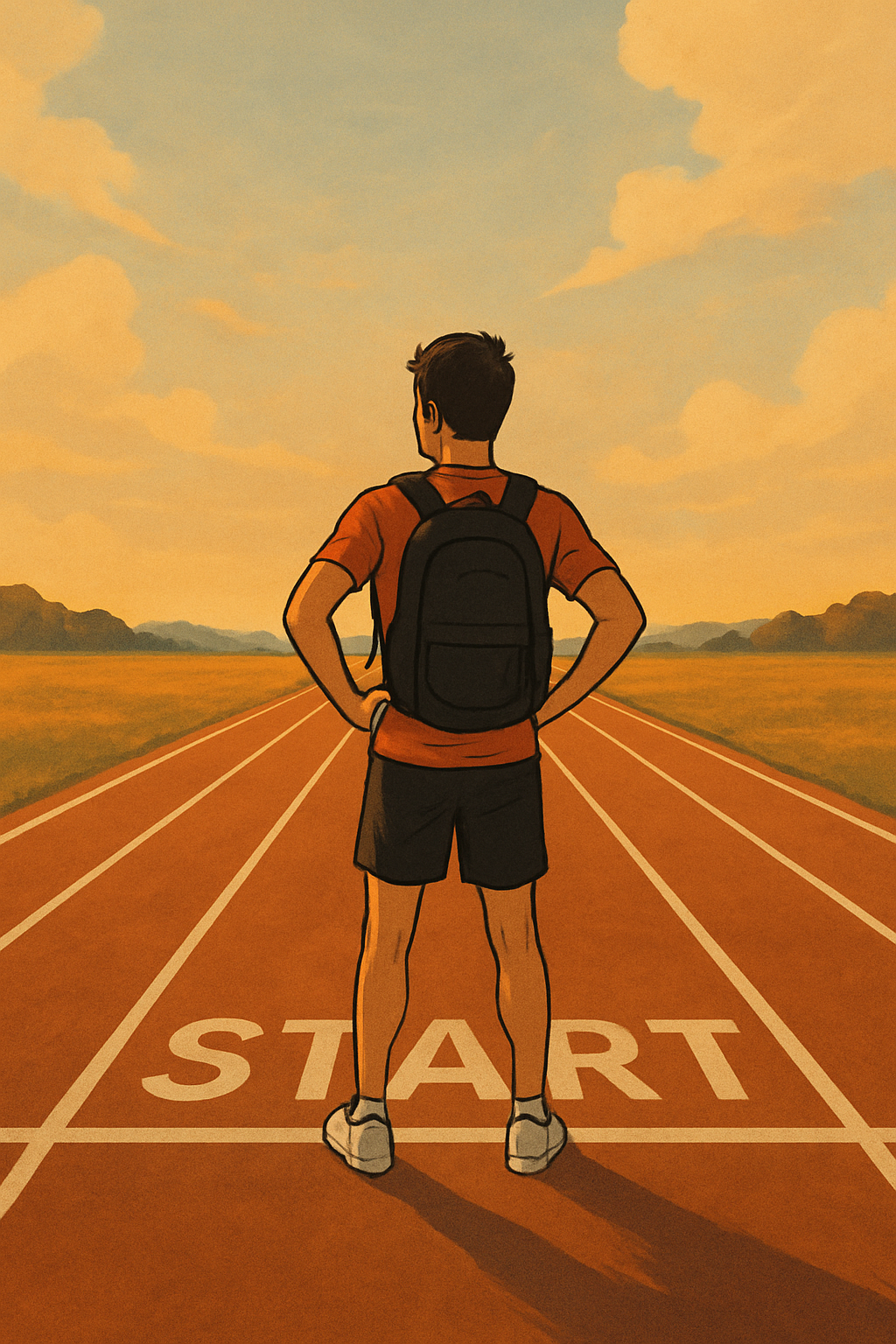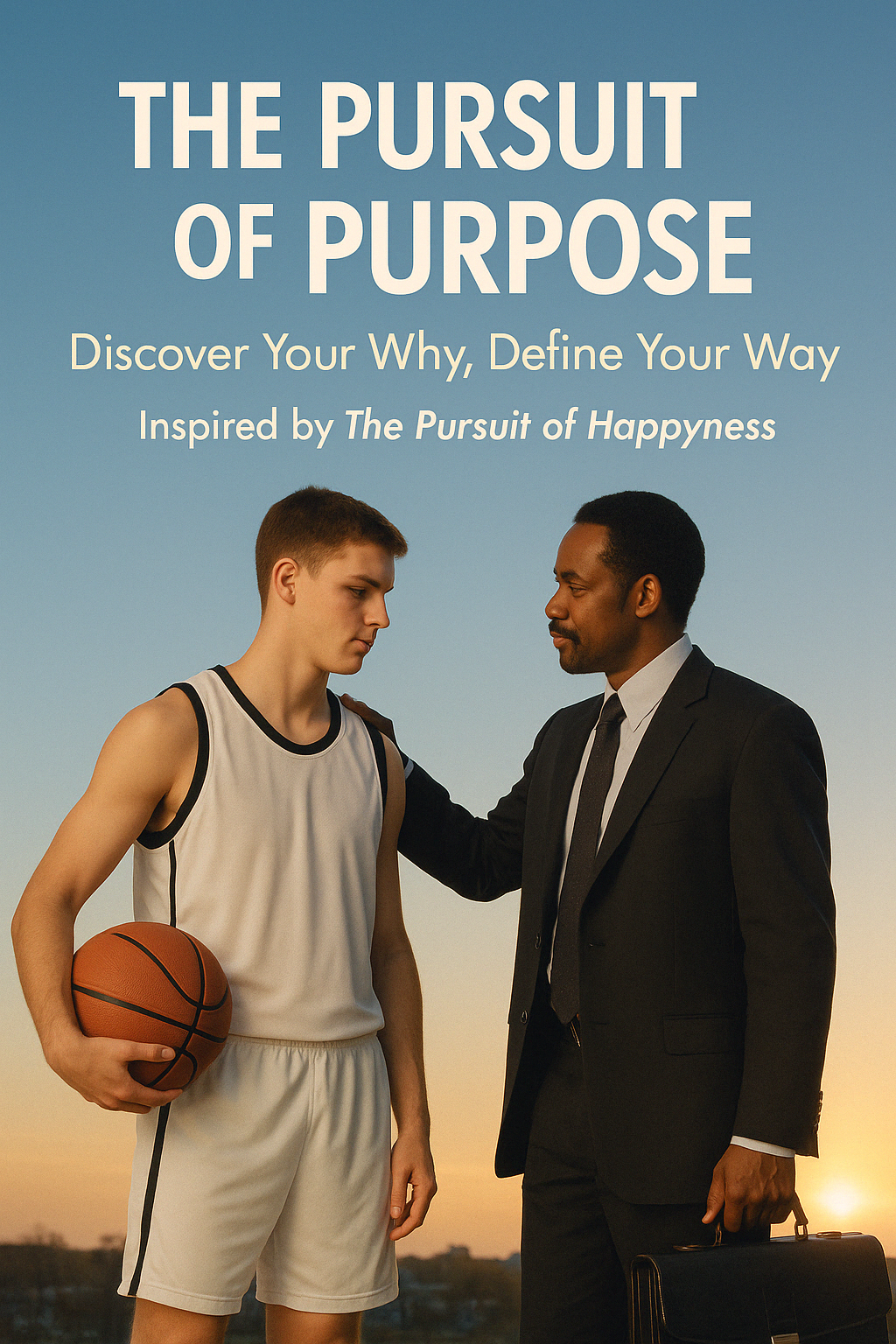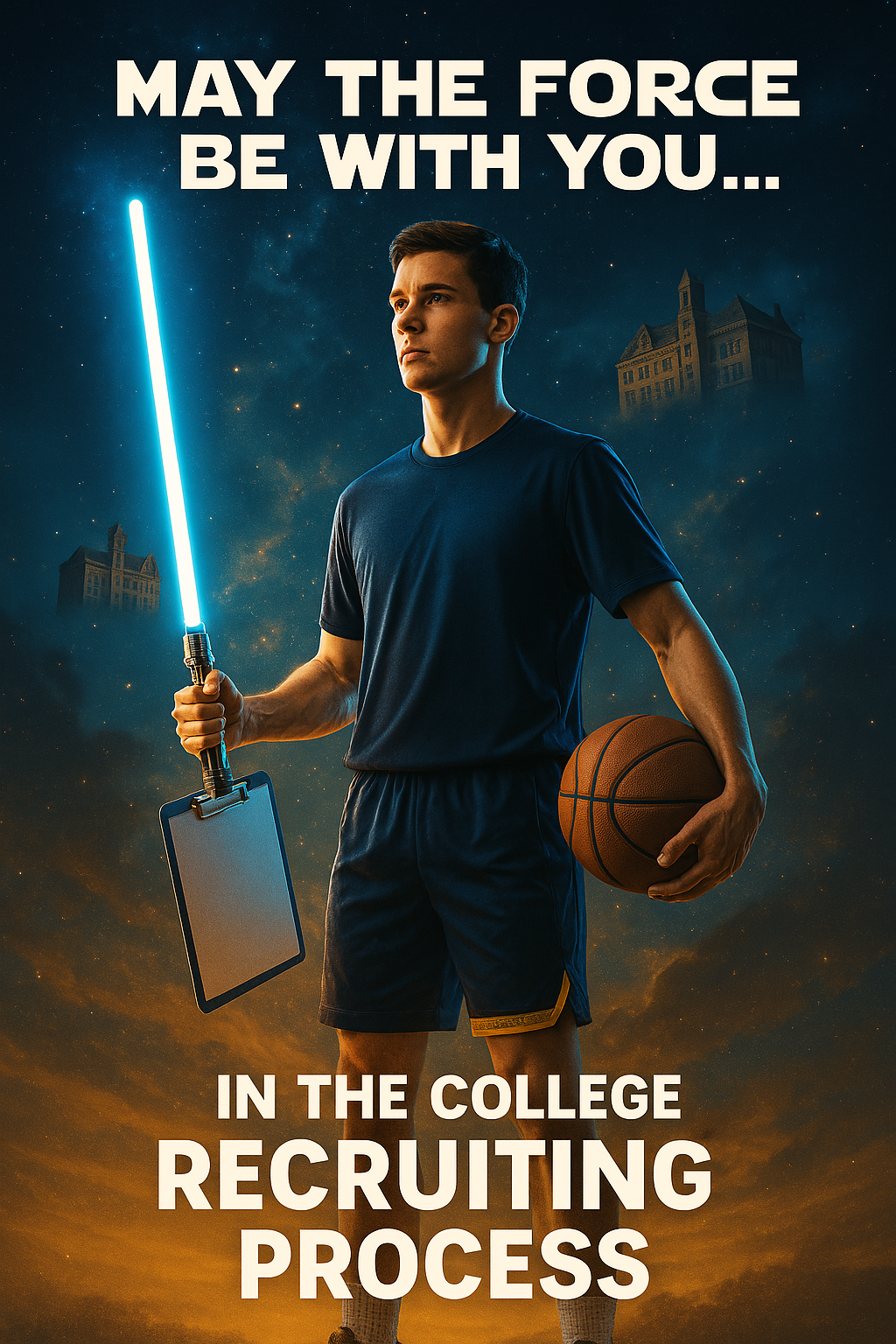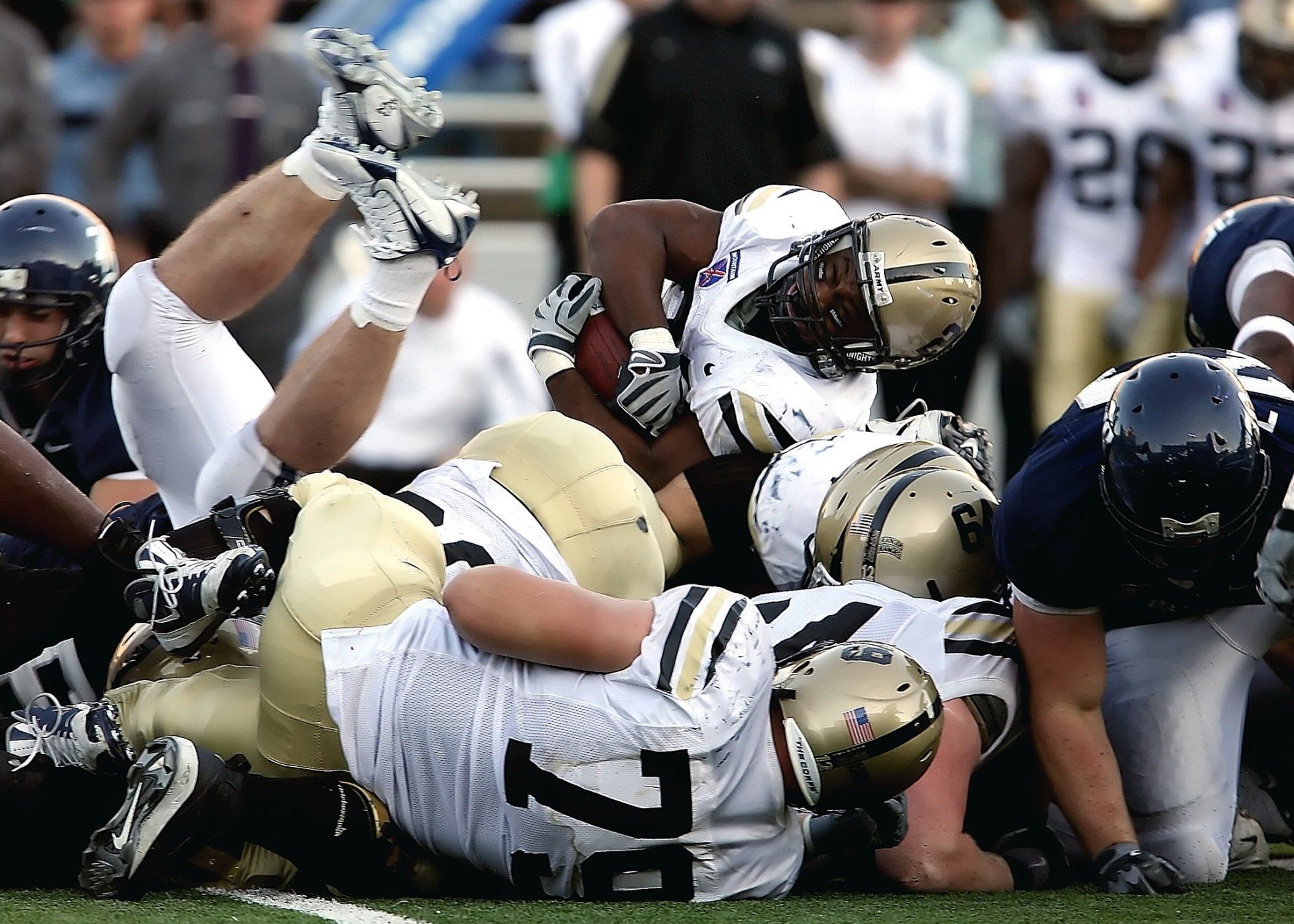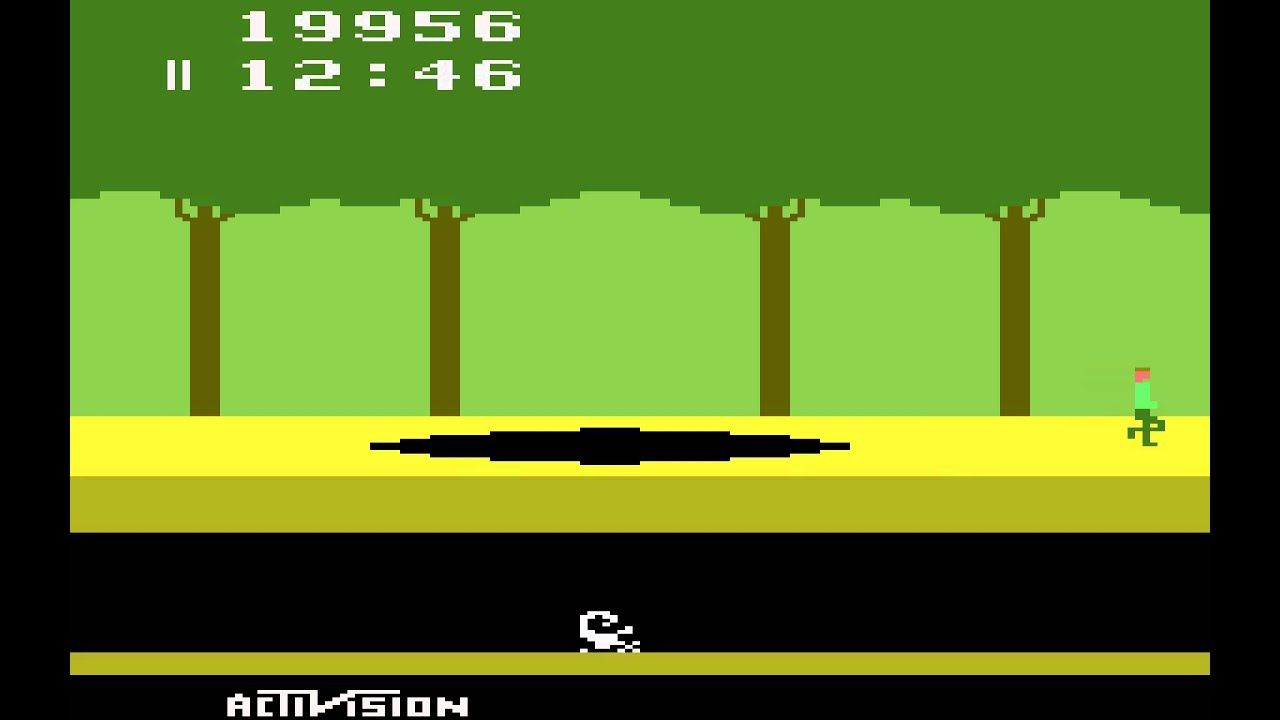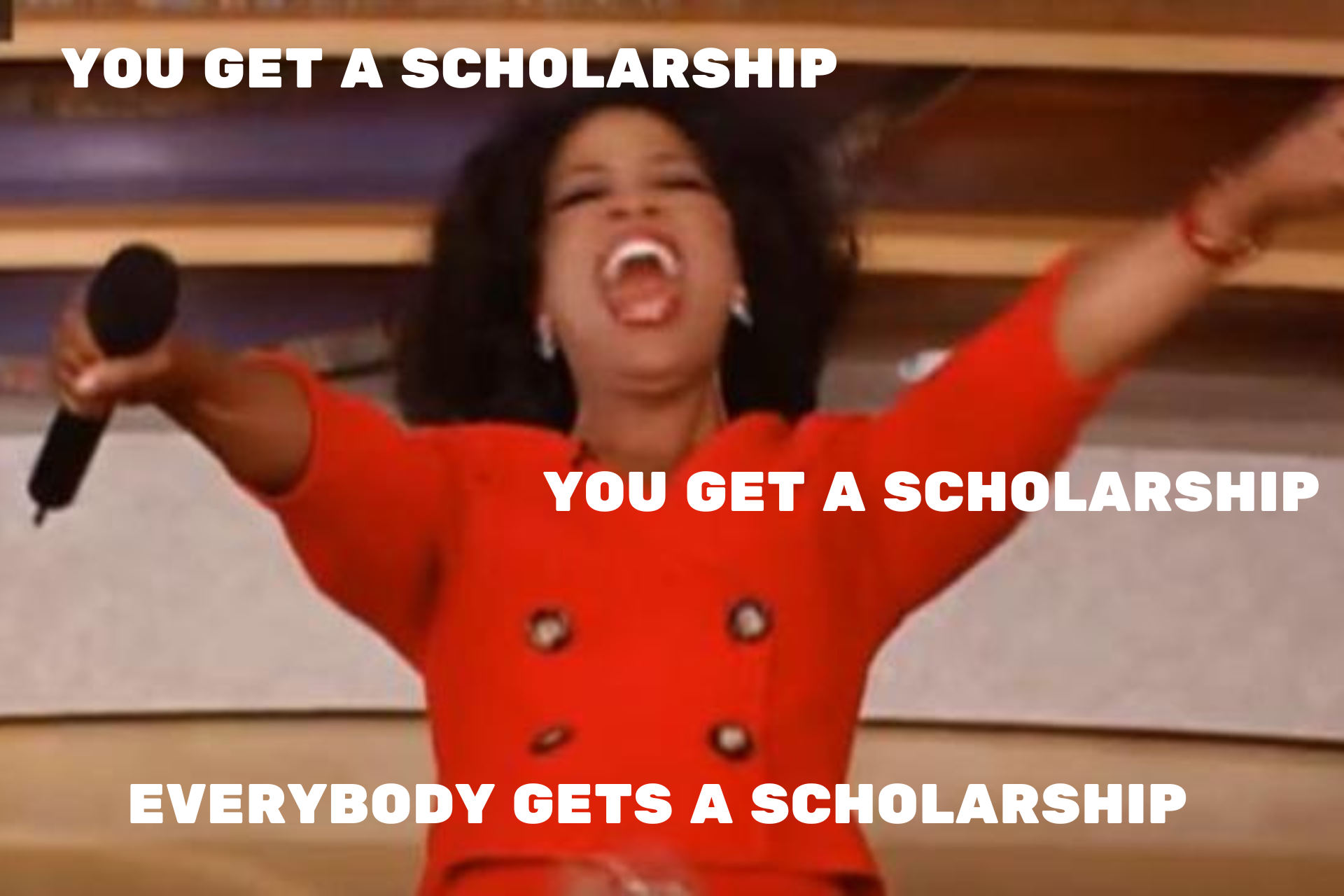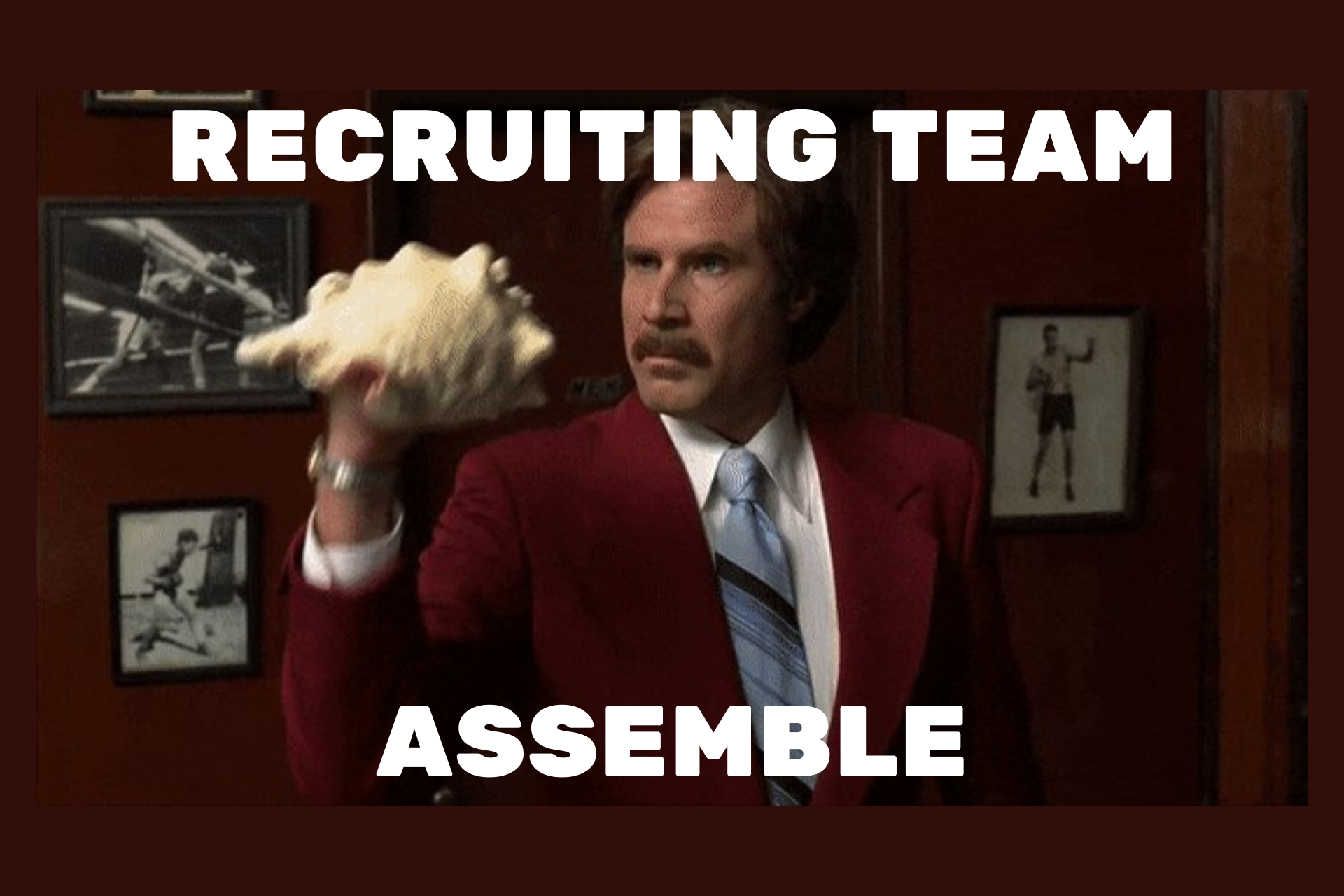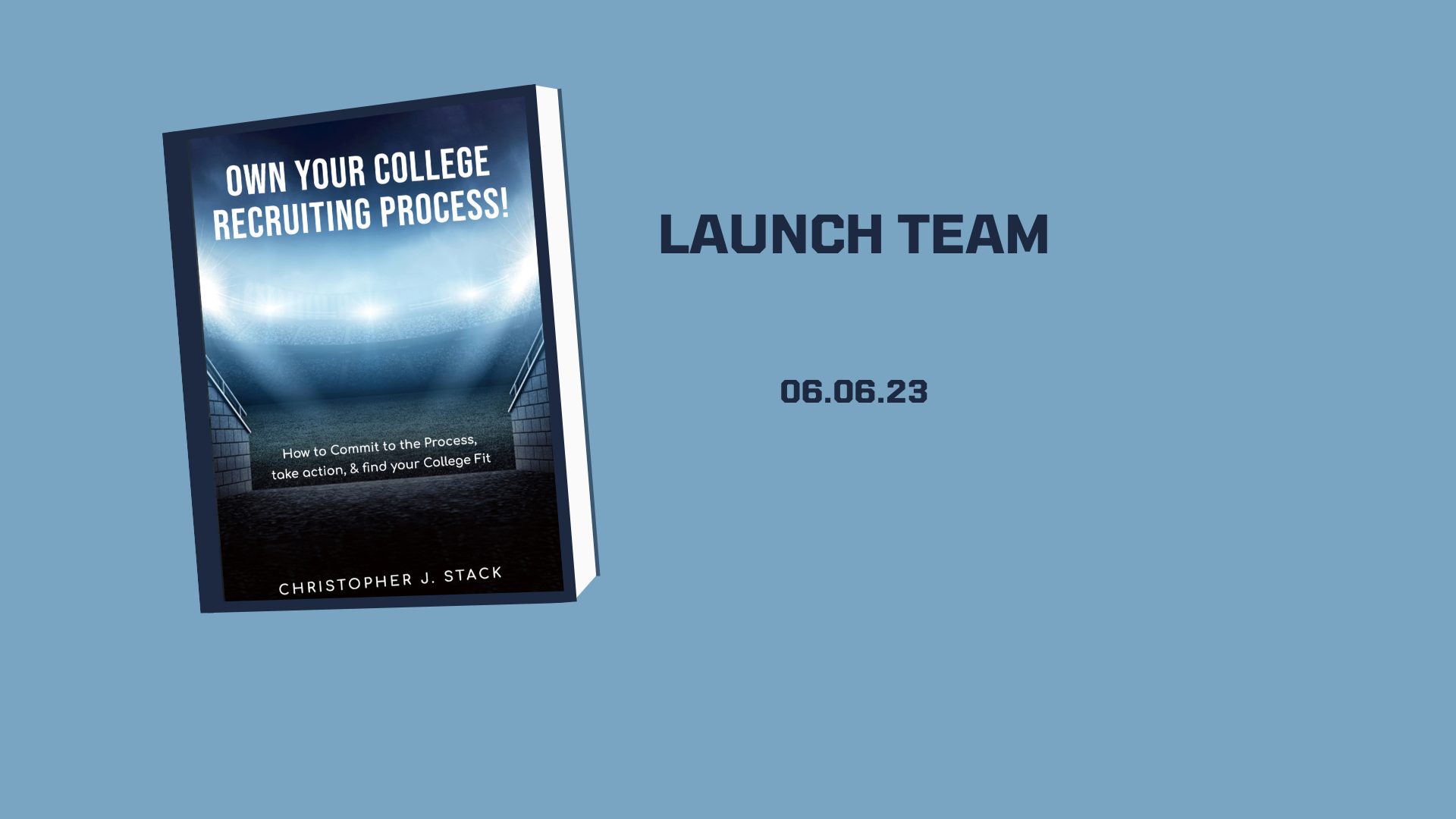GFS BLOG

💡 What It Means to Be a SMART Recruit If you're a high school student-athlete with dreams of playing at the college level, you’ve probably heard how competitive and confusing the recruiting process can be. It’s true—navigating the world of college athletics, eligibility rules, academic requirements, communication with coaches, and scholarship opportunities can feel overwhelming. But here’s the good news: you don’t have to go through it blindly. Being a SMART Recruit means more than just athletic talent. It means you’re Educated , Empowered , Engaged , and Inspired . You take ownership of your journey by staying informed , organized , and committed to your future—both on and off the field. Let’s break it down. 🎓 Educated: Know the Landscape Smart Recruits take the time to understand the recruiting process. They know the rules, eligibility requirements, timelines, and what college coaches are looking for. They research the differences between NCAA Divisions I, II, III, NAIA, and NJCAA, and they understand how academics, athletics, and personal fit all play a role in finding the right school. Knowledge is power. When you're educated, you're able to avoid common mistakes, ask the right questions, and make informed decisions. 💪 Empowered: Own Your Journey Smart Recruits don’t wait for opportunity—they create it. They know that recruiting isn’t something that “just happens” to them. They take control by reaching out to coaches, attending the right events, and building a strong recruiting profile that reflects who they are as a student-athlete and a person. They recognize that no one will work harder for their future than they will . That sense of empowerment fuels their actions and keeps them moving forward—even when the journey gets tough. 🧠 Engaged: Be Proactive and Present The recruiting process is not passive—it requires you to stay active and engaged. Smart Recruits use tools like communication trackers, college lists, and visit checklists to stay on top of their outreach and deadlines. They’re not afraid to follow up, ask questions, and stay consistent. Being engaged means showing up: in your inbox, in the classroom, on the field, and in your mindset. Consistency beats luck every time. 🌟 Inspired: Stay Motivated by Your "Why" Every successful recruiting journey starts with a clear sense of purpose. Smart Recruits know why they’re pursuing college athletics, what they hope to achieve, and who they want to become in the process. That vision fuels their daily habits and decisions. Whether it's waking up early to train, studying late for a test, or rewriting an email to a coach—they’re motivated by a bigger goal and inspired to keep going, even when it’s hard. 🧭 Stay Informed. Stay Organized. Stay Ahead. Being a SMART Recruit also means staying informed about deadlines, program updates, and coach responses—and staying organized enough to manage it all. Whether you're managing communication, video links, or academic transcripts, having a system in place is crucial. That’s why tools like The Smart Recruit Tool Kit exist—to help you streamline the process, stay accountable, and make progress every week. 🎉 Coming Soon: The Smart Recruit Toolkit Get ready to take control of your college recruiting journey! The Smart Recruit —a comprehensive DIY toolkit designed to help student-athletes become educated, empowered, engaged, and inspired—will be launching soon. Packed with worksheets, templates, and expert guidance, this resource is your ultimate playbook to navigate the recruiting process with confidence and clarity. Stay tuned for the official launch! 🔚 Final Thought: Be the Recruit Coaches Want to Coach College coaches are looking for more than just athletic ability. They want students who are driven, self-aware, academically committed, and coachable. When you approach the process like a SMART Recruit , you show coaches you’re ready—not just to play at the next level, but to thrive there. ✅ Educated. ✅ Empowered. ✅ Engaged. ✅ Inspired. ✅ Informed & Organized. That’s what it means to be a SMART Recruit.
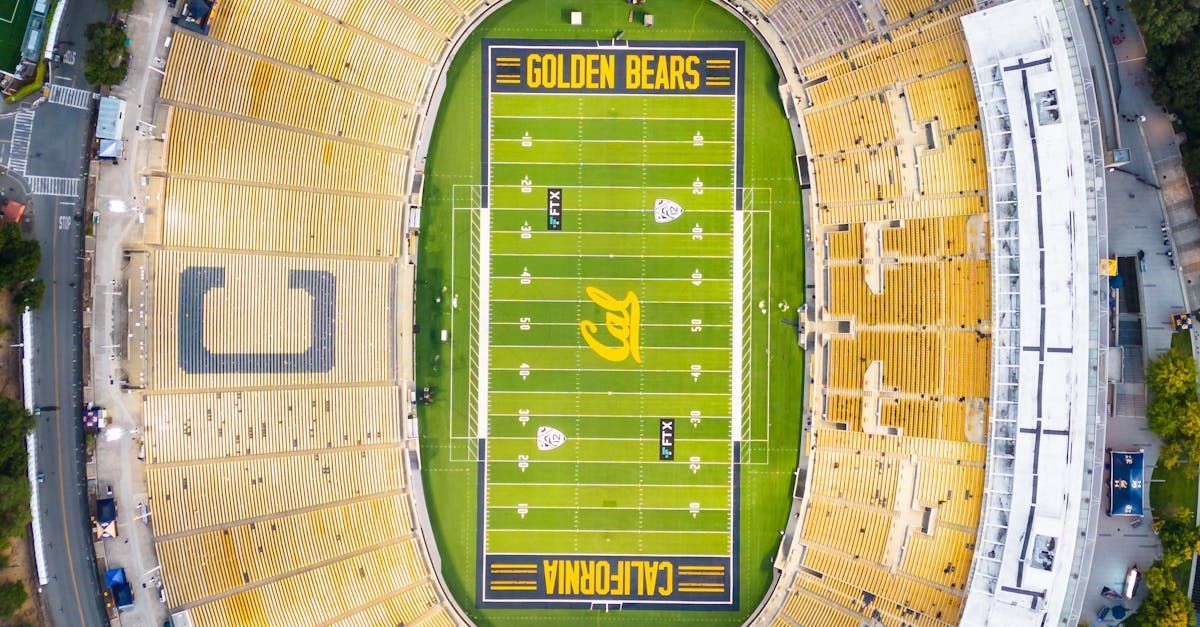
The recruiting landscape for high school student-athletes is on the cusp of a significant transformation. Recent NCAA lawsuits and rulings have far-reaching implications that will change the way colleges recruit, distribute scholarships, and compensate athletes. As the dust settles, here's how these changes will impact the future of recruiting: Employee Status: A Game-Changer The recent ruling that grants employee status to college athletes will revolutionize the recruiting process. Colleges will now need to consider the financial and legal implications of employing student-athletes. This shift will likely lead to: - More emphasis on compensation packages and benefits - Changes in scholarship models and revenue sharing - Increased focus on athlete welfare and support services NCAA Athletes as Employees: Recent Ruling and Implications* A U.S. appeals court in Philadelphia ruled on July 11, 2024, that college athletes whose efforts primarily benefit their schools may qualify as employees deserving of pay under federal wage-and-hour laws ¹. This decision means that a test should be developed to differentiate between students who play college sports for fun and those whose effort "crosses the legal line into work" ¹. - Implications This ruling has significant implications for the NCAA and its long-standing concept of amateurism ¹. If athletes are considered employees, they may be entitled to compensation, benefits, and legal protections ². However, NCAA officials argue that this could harm student-athletes' experiences and create financial burdens for schools ¹. - Ongoing Debate: This issue is part of a broader debate about the rights and compensation of college athletes ². Some argue that athletes should be paid for their labor, while others believe that compensation could undermine the amateur nature of college sports ³. The National Labor Relations Board is also considering whether college athletes should be considered employees under federal labor law ². - Potential Consequences If athletes are classified as employees, schools and the NCAA may face substantial back pay claims from current and former athletes ⁴. This could lead to significant changes in the way college sports are structured and financed ². However, others argue that this could lead to unintended consequences, such as schools only funding profitable sports or detracting from the overall educational experience ². The Impact of New Ruling on Future College Rosters Reduced Roster Sizes Increased Injuries and Mental Health Issues Compensation and Benefits The impact of the new ruling on future college rosters is uncertain, with ongoing debates and discussions among coaches, administrators, and athletes ⁶. The new ruling's impact on future college rosters will likely unfold in the coming months and years. Name, Image, and Likeness (NIL): A New Recruiting Tool With the introduction of NIL guidelines, colleges can now use an athlete's marketability as a recruiting selling point. This will lead to: - Increased emphasis on social media presence and personal branding - Colleges highlighting their ability to help athletes build their NIL - More creative and lucrative endorsement opportunities Roster Size and Scholarship Implications Reduced roster sizes and changes in scholarship models will impact the number of available spots for incoming recruits. This will lead to: - Increased competition for fewer spots - More emphasis on early recruiting and commitments - Potential for more athletes to consider alternative routes like junior college or NAIA Recruiting Strategies: Adapting to the New Landscape Colleges will need to adapt their recruiting strategies to stay competitive. This may include: - Earlier identification and recruitment of top talent - More personalized and holistic approaches to recruiting - Increased focus on athlete development and support services The Student-Athlete Experience: A New Priority With the emphasis on athlete welfare and support services, colleges will need to prioritize the student-athlete experience. This will lead to: - Increased focus on academic support and resources - More emphasis on mental health and wellness programs - Colleges highlighting their commitment to athlete development and success beyond sports The future of recruiting high school student-athletes will be shaped by the evolving NCAA landscape. As colleges navigate these changes, they'll need to prioritize creative recruiting strategies, athlete welfare, and support services to attract top talent. Student-athletes, in turn, will need to be more proactive in their recruitment, considering factors beyond just athletic development. As the recruiting landscape continues to shift, one thing is certain – the future of college sports will be shaped by these transformative changes. Sources: Appeals court rules NCAA Athletes may qualify as employees - www.insidehighered.com NCAA Student-Athletes as Employees Case is Pandora's Box - news.bloomberglaw.com Are College Athletes "employees" of their school? - www.marketplace.org Pay to Play? Third Circuit Holds NCAA Athletes can be Considered Employees - www.littler.com

Wouldn't it be great if we could jump into our Delorean and go back in time to when the college decision was made by seniors. Believe it or not, 20 years ago High School senior student-athletes used to make their college decision. And then over time, it was juniors, sophomores, freshmen, and even some 8th graders who were verbally committing to a college. Crazy right? And then a few years ago, a couple sport specific coaching groups pleaded to the NCAA to try and slow it down by tightening restrictions on college coaches and their programs. And they complied, working together they adopted rules that would restrict any contact, incoming and or outgoing between prospective student-athletes and coaches prior to junior year, which in essence would prevent early commitments. But today, we are in a different world due to the COVID-19 pandemic. Many states have shut down youth sports, college seasons were cancelled, college programs cut, and recruiting as we know it came to a screeching halt. And for the classes of 2021 and 2022 that was a devastating blow. These student-athletes have had limited opportunities to be evaluated, visit college campuses, and have face to face interactions with college coaches. The 3 most important things to do in order to be recruited. There are actually high school seniors who have committed to schools without ever meeting their coach in person, only over a screen via face times and zoom meetings. But the hit that these two classes are taking might bring the recruiting cycle back to how it should be, when a senior, typically a 17 or 18 year old student will be making the biggest decision of their young adult life, rather than a 15-16 year old. I believe those two years make a world of difference. The responsibility a senior carries is much more than that of a sophomore. They might have a job and have their license. It only makes sense that a 17 or 18 year old is more equipped to make a decision about college than a 15 or 16 year old. In no way I am saying that the pandemic arriving and shutting down recruiting is a good thing for anyone but it just might relieve the pressure of the current 2023, 2024, and 2025’s who have aspirations of playing their sport at the next level. I am a proponent that high school freshmen should not have to start worrying about college and what they want to study, etc. They are just beginning to make the transition of adolescence to young adulthood. They should have some time for that adjustment. This is a time to enjoy getting to this part of their life, making new friends and experiencing new things and ideas. There will be many life lessons along the way that will prepare them for making this big decision in a couple of years. But not now! In their first couple years of high school they will begin to be molded into the person they are to become. They will begin to discover their interests academically, athletically, and socially. The kids don’t need the added pressure of thinking about college before they barely get their feet wet in high school. With all of that said, I am for student-athletes to be educated about the recruiting process before they jump right in. There are so many factors and aspects to consider. It is important to understand the intricacies of academic eligibility, the recruiting rules, what coaches are looking for, how to market yourself, and then how to stand out from the crowd. And these are things that can be taught and learned prior to starting the process. From a college perspective, being able to primarily focus on Juniors and Seniors might relieve some of the added stress and pressures a coach might face in the world of recruiting. The recruiting cycle is never ending for a college coach and his/her staff. They are inundated with hundreds, if not thousands of emails and videos to watch of potential prospects across a variety of recruiting classes. I can only imagine how relieved a coach might be if they didn’t have to focus on identifying freshmen and sophomores who aren’t fully matured yet, physically or mentally and could just focus on identifying and evaluating juniors and making final decisions on the seniors on their list. I bet life would be grand! In an ideal world what would my recruiting cycle or timeline look like for a prospective student-athlete. Spring of Sophomore Year Begin Recruiting Education Process Summer prior to Junior year Attend ID Events, Showcases, Camps, and Clinics Fall/Winter of Junior Year Build a List of Schools (20-30 minimum) Research School and Programs Contact College Coaches Attend College ID Events (Showcases, Camps, and Clinics, etc) Winter/Spring of Junior year Begin prioritizing communications with college coaches Narrow List of Schools (8-10 schools) Start setting up unofficial visits to top choices Attend ID Events Summer prior to Senior Year Narrow list of schools (4-5 schools) Attend college specific camps and clinics Make Verbal Commitment Fall of Senior Year (If not committed) Set up Official Visits Begin Weighing options The Decision We obviously do not live in an ideal world but there would be huge benefits to the next generation if the recruiting cycle returned to the way it was 20 years ago. Benefits of the Recruiting Cycle Returning to the 2000’s Relieve the amount of pressure on freshman and sophomores to perform at high levels to impress college coaches. Freshman and Sophomores can focus on learning ,loving their sport, and improving. Limit the burnout rate of elite level student-athletes. Allows more equipped young adults to make a life altering decision. Save parents time and money invested into the college process Allow college coaches to focus on 2 recruiting classes , not 4. College coaches will be able to identify and evaluate more physically mature athletes, rather than projecting where a student-athlete might be in 2 years. In the end, we need to do it for the mental health of the student-athletes. There are so many challenges academically, athletically, personally, and socially they need to deal with. We don't need to pile on the added pressure of college talk at 14-15 years old. It is hard enough just being a kid and making the transition from adolescence to young adulthood. They are not equipped to begin thinking about college and the rest of their lives. Let’s give the decision back to Seniors!
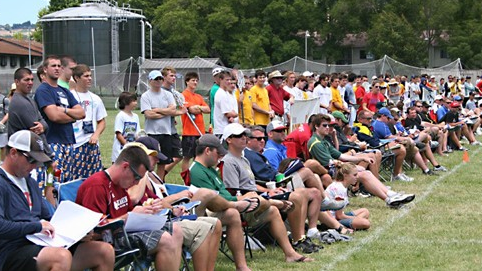
Do you want to continue your academic and athletic career in college? Do you think you have what it takes to be a college student-athlete? Playing in college goes well beyond your athletic abilities. Do you rest on your talents or are you willing to put in the time, effort, and energy to be the best you possibly can? Would you consider yourself lazy? Do you prioritize your academics? What kind of character do you have? Being recruited is about being a well-rounded individual. Taking the words from Shaquille O’Neal who borrowed them from Aristotle, “Excellence is not a singular act but a habit. You are what you repeatedly do.” Leaving athletic abilities and skills aside, what are the habits of a highly recruitable student-athlete? Stephen Covey, the world renown author developed the 7 Habits of Highly Effective People, I have created my own 7 Habits of Highly Recruitable Student-Athletes: Habit #1: Identify Goals We also call this habit “Discovering Your Why.” This is very similar to Stephen Covey’s habit, “Begin with the End in Mind.” Before you start the college recruiting/college search process, you need to establish your motives and goals not only for playing college sports but attending college in general. What do you want to get out of your college experience, academically, athletically, and personally? Your answers to these questions will define your why. By developing this foundation you will have a much clearer picture of what you are looking for and how to find it. Habit #2: Self-Confidence Being a college student-athlete, you need to be confident in who you are as a student, an athlete, and a person. If playing your sport is important to you, then there is place out there for you. No matter what level you think you are capable of playing at, possessing self-confidence is an important habit. You need to be able to express to a college coach what value you can provide to their program both on and off the field. The only way you can do that is be confident in who you are. Having self-confidence mixed in with a little self-awareness will take you a long way through the college recruiting process. Habit #3: Prioritize Your Preferences What is important to you? When looking for schools that fit your academic, athletic, and personal needs, you need to figure what factors are most important to you in your college search. Mount St. Mary’s Head Men’s Basketball Coach, Jamion Christian, says that every recruit should write down five things that are important to them in their college experience and stick to the game plan when navigating through the process. Here are some of the factors you need to consider: Location (Distance from home, part of the country, climate) Size Academic Programs Athletic Program Level of Play Playing Time Program Success Habit #4: Understand the Process What do you know about the recruiting process? It’s important to have a grasp of how the process works: What are the differences between the various levels of play (DI, DII, DIII, and NAIA)? What do you know about athletic scholarships? When can you contact a college coach? When can a college coach contact you? How to use Social Media to enhance your personal brand? What are the best ways to communicate with college coaches? How do coaches identify and evaluate prospective student-athletes? Having the answers to these questions will help you navigate through the communication and exposure phase successfully. Habit #5: Be Proactive Nobody will accomplish anything by sitting on the sidelines and watching. If you want something bad enough, you have to take action. The recruiting process is no different. If you are part of the other 98% of high school student-athletes who are not being courted by a big time Division I school, program, or coach you need to do the work to be recruited. Practicing the previous four habits are useless if you aren’t willing to put yourself out there and be proactive. Being Proactive refers to more than the recruiting process but how you approach things in your life. In school, are you willing to go the extra mile to get a better grade on that final exam? Will you spend extra time on the court working on that 20 foot jumper, or more time in the pool to work on that flip turn? You cannot sit idly by and expect you will just magically improve those skills, and in the recruiting process, you cannot wait for college coaches to discover you. You need to contact college coaches directly via email, phone, or even social media. In order to be evaluated by a college coach you need to attend college showcase events or college ID camps/clinics. Being proactive is the habit of implementing and executing action items to achieve specific goals. Habit #6: Appreciate the Journey The opportunity to go through the college recruiting process is the pinnacle of all of the time, effort, energy, and commitment you have made to your sport. It is important that you not only enjoy the experience but appreciate the journey and where you are going. There have been many people who have supported you over the years and have helped you get to this point in your life make sure you appreciate what they have done for you. The coaches who have helped you refine your craft, the teammates you have played alongside, and of course your parents who have sacrificed so much for you to achieve your goals. You should be grateful for the opportunity you have been given. Never take anything for granted. Be thankful for every letter, email, text, social media message you receive from a college coach. There is no better feeling than being wanted and loved by a college coach no matter what division it may be. Coach Christian says, ” go to the place where you are not only loved but wanted and needed. I’ve seen it too many times where student-athletes choose a school where they don’t really want to go but do because of the level. Happiness cannot be measured if you have a burning desire to play. ” You need to keep the big picture in mind, playing college sports is an opportunity to play a sport you love while building an educational foundation for your future. Habit #7: Refine Your Craft Don’t ever be content on where you are with your overall development as a student, an athlete, and as a person. Refining your craft means more than just working on your game, it means preserving and enhancing the greatest asset you have–you. In order to be the best version of yourself by the time you step on campus for the first time, you need to create a balanced program for self development in all aspects your life: physical, social, mental, and spiritual.

Many high school student-athletes are convinced that Division I is the best and only option when it comes to playing in college. So, when they finally get to to the recruiting process their main focus is playing Division I and not finding the school that fits their academic, athletic, and personal needs. This is what we call the DI Blinders. I have heard "I have to play Division I" more times than I would like to admit. We need more student-athletes to "Take the Blinders Off." I believe this is the biggest pitfall kids make navigating through the college recruiting process. There is nothing wrong with keeping an open mind early on in the recruiting process. Student-Athletes should not overlook any opportunities that are presented to them, whether it is DI, DII, or DIII. The experience alone visiting schools and meeting with college coaches will provide enormous value as the recruiting process continues. As you look at what each opportunity or experience can offer you , you will start to gt a better idea of what will be the right fit. Most students believe that the best teams and best players are at the Division I level. For the most part that is an accurate statement but that does not run true across the board. I know plenty of Division III student-athletes who were good enough to compete at the Division I level but wanted to a more balanced college experience, and there is nothing wrong with that. And I also know student-athletes who chose Division I but probably would have been a better fit athletically for DIII but were caught up in the DI ..... There are over 1,100 NCAA Institutions that offer varsity intercollegiate athletics. In addition, another 1,000 schools or so in other athletic associations like NAIA, NJCAA, NCCAA, USCAA, and others. There are schools that can offer you an incredible athletic experience while providing you with a excellent education to prepare you for your next stage in life. If you want to play in college than there is a program out there for you, you just need to find it. Case Study A female soccer player who had aspirations of playing at the highest level of college soccer. A very talented player who possessed strong academics built a list of some of the best Division I soccer programs on the East Coast. She began sending emails to the coaches to express interest in their programs. She attended a number of ID Showcases and Clinics over the course of the year. But didn't feel like she was receiving much interest from some of the coaches. My Recommendation (Summer prior to Junior Year) To expand her list of schools and start adding some DII and DIII schools to the list. I provided a list of 10-15 DII and DIII schools where I thought she would be a good fit both academically and athletically. When September 1 of junior year arrived her communication with many of the DI programs was very limited but she still wanted to pursue those opportunities. Some of those DI programs offered her a walk-on spot but she was not getting much interest as a scholarship player. Cost was not an issue for the family but she still wanted to play at the highest level. She continued attending Division I ID Clinics during the fall of her junior year and still wasn't receiving much love from the coaches. It wasn't until December that she started to receive some interest but more from DII and DIII schools which were on her updated list. So, finally she changed her tune and started looking at some DII and DIII scchools. She began emailing with coaches, attending their ID Clinics, and arranging campus visits. In January she visited one of the DIII schools and just fell in love with the place. And after her visit, time spent with the coaching staff, and their ID Clinic. She knew it was the place for her. In early spring of her junior year after she made more campus visits she finally committed to that DIII program she visited in January. She has been a two year starter and loving life at her school. She ultimately ended up at a school that was the right fit for her. But there were many months where she was stressed out because of the process. She had feelings of doubt about her abilities. I believe she could have alleviated some of those stressful moments, if at the beginning she was looking at the DII and DIII opportunities as well as the DI programs. Scenario If you were a high school student-athlete who was maybe deciding between some smaller DI programs and Top Rated DIII programs do you know which you would choose? Maybe you were offered a walk-on opportunity at the Division I level and at the DIII program you could contribute immediately as well as compete for conference and national championships. Which direction would you go? These are questions that prospective student-athletes need to address. It shouldn't be as cut and dry as DI, DII, or DIII but for many it is the allure of Division I that draws them in. My P.S.A to those student-athletes about to embark on the college recruiting process. Keep an Open Mind Explore all of your opportunities Don't close the door too early on any school, program, or coach Don't burn any bridges Be open, honest, and upfront with all coaches

A recruits talent is obviously an important piece in a college coaches evaluation of any prospective student-athlete. But the decision to actively recruit a student-athlete goes well beyond talent. A prospective student-athlete's attitude and character may be the most important attribute to a college coach. What Is Attitude? Attitude is how a student-athlete carries himself or herself on and off the field. Regardless of a players' performance, their skill, tactical, and physical display, other factors heavily influence a coach's decision to recruit a given athlete. Coaches will look at their mental and psychological make up, their mental ability to quickly and correctly read and assess situations, their motivational drive and will power, their self confidence, and emotional stability. A big determining factor of a prospects attitude is their body language on the field. A coach can get a good sense of who you are by how you react to situations on the field. Every coach loves to identify key players with personalities and qualities that cause them to become leaders. Here are some of the most recognizable personality traits. Drive Aggressiveness Determination Leadership Self-Confidence Mental Toughness Coach-ability What is Character Character is the mental and moral qualities to an individual. It just may be the most important aspect to the college recruiting process. College coaches want to know what kind of person you are and what is important to you. A college coach only has a limited amount of opportunities to evaluate a prospective student-athlete's character. In order to help prospective student-athletes understand that it could be the difference between receiving a scholarship or not, we want to show them how to portray they are a high character individual. It is difficult to gauge what type of person you are just from your student-athlete profile or introduction letter. However, showing you are involved in a lot of extracurricular activities and clubs, community service, and that you have a job will show a coach that you are responsible and know how to manage your time to balance all of those activities. After interviewing a number of college coaches about what they look for in their recruits, there were certain qualities that continued to stand out. So I created the GFS 6 Pillars of Character. It these qualities among many others that college coaches seek. ACCOUNTABILITY Are you accountable for your actions? Are you accountable for your time? INTEGRITY Are you honest, do you have strong moral principles? LEADERSHIP Do you possess leadership qualities? RESPECT Do you show respect toward others, especially parents , coaches, teachers, etc LOYALTY Are you responsible? Are you able to complete the tasks you set out for yourself? TRUSTWORTHINESS Can you be trusted on your word? Do your actions back up words? --------------------------------------------------------------------------------------------------------------- Most college coaches have a very keen sense and can pick up on some of these things as they watch you play or on a campus visit. While you are on the field or court, are you a leader. Are you positive and encouraging, or are you negative and critical? If you are on a campus visit how do you act around your parents. Do you treat them with respect or do you cut them off when you think they might say something stupid, or do you give an eye roll or shoulder shrug when they say or do something. College coaches are always watching you, and not just what happens in between the lines. College coaches receive lots of interest from prospective student-athletes and the need to gauge what type of person you are in a very short period of time. In an 2015 interview with Jamion Christian, now the Head Men's Basketball Coach at George Washington University we asked him about is recruiting philosophy and the importance of character in a prospective student-athlete. Character is also important in identifying prospects. Character means everything when you are projecting on how good someone will be down the road as a college senior. Those with strong character have tendency to help improve a program in some way before they graduate. "The sooner that a coach can understand the mental make-up of a player the sooner they will be able to coach them into becoming the best version of themselves as a person." - Jamion Christian Another big factor that coaches are using to begin to evaluate prospective student-athletes are their social media profiles. Ho do you portray yourself in the twittersphere. What kind of posts do you make? Who do you follow? What kind of pictures are on your page? Social media is beginning to have a huge impact on college recruiting. There have been many stories where a social media post has caused students to lose scholarships, be suspended , or even kicked off team. Use social media to enhance your personal brand not to destroy it. A coach can begin to get a sense of what kind of person you are just from browsing through your social media profiles. And now the NCAA has even allowed college coaches to begin interacting with prospective student-athletes on social media. College Coaches are looking for the complete student-athlete? Do you check all of the required boxes.

There are many kids who dream of playing college sports around the country. Those same kids have visions of that big time signing day with the fan fare and press. Those events are very real. But for most high school student athletes the decision and opportunity to play in college is a daunting and confusing task. HERE IS THE TRUTH Recruiting is just as much the responsibility of the student-athlete as it is on the athletic program. Coaches cannot possibly identify every athlete no matter how many events they attend, no matter how many camps they attend, and no matter how many programs they sign up for to guarantee recruitment. Simply put, athletes and programs need to find each other. College Recruiting is a 2 Way street. As much as college coaches are recruiting student-athletes, the student-athlete has to recruit the coach and the program. The athlete will do most of the work, but for something as incredible as playing college sports they should work for it. That includes on the field, in the classroom, as well as the preparation process and the research of schools, programs, and coaches. RECRUITING A PROGRAM We all know what a college coach recruiting a student-athletes entails but how does a Student-Athlete recruit a program or coach? From a coaches perspective It is important to look at what the student-athlete can bring to the program but what might be overlooked in the “process” is what can the program do for the student-athlete. Here are some tips to help you Recruit a Program ESTABLISH YOUR GOALS The first step is establishing your goals and determine what you are looking for in terms of your student-athlete experience. What do you want to get out of your college experience? You want to find a school that will help you develop academically, athletically, and personally. So, answering that question will help paint a much clearer picture in the decision making process. 2. RESEARCH - Gathering as much information about the school, the program, and coach will be high on the priority list as you begin the process. I recommend to begin with the school and make sure it fits your academic and personal preferences, size, setting, location, social atmosphere, extracurriculars, etc. Next, to turn your attention to the program. Is it the level of play you are looking for? How many players are they looking for in your recruiting class? What positions? How many players on the roster at your position are contributing on the field? Is there an All-Conference or even All-American you would have to compete with for a couple of years. Look deeper into the stats, where is the program lacking and where do you think you can add value? Once you discover that info you need to sell yourself to the coach so the coach realizes they need you just as much as you need them. A student-athlete who has confidence in who they are both on and off the field and can show that to a college coach will be extremely coveted. Another piece that might be overlooked is you need to get out and watch college games. If you have the opportunity, watch different levels of play so you can compare the speed, intensity, and skill level to your own. Lastly, look at the coach. What is his/her coaching style or philosophy. Do they align with your core values and playing style? What do other players say about the coach? This might be harder info to track down but there are resources you can utilize. Visit www.lrt-sports.com to check out the college coach ratings and see what their current and former players are saying about the coach. 3. SEND QUALITY NOT QUANTITY As much as college recruiting is a numbers game, quality is far more important than quantity. Write a personalized letter to each coach and program you are interested in rather than sending a generic email to 50 schools. Send 20-30 personalized letters explaining why you are interested in that program and what value you can add both on and off the field. 4. VISIT CAMPUS There is no substitute for visiting a college and getting a feel of what campus life is like. The campus visit is an integral part of the recruiting component. Consider it a fact finding mission. You want to discover as much about the school, program, and coach While on campus. You want to do and see as much as possible. A campus visit is typically the first time you will have face to face interaction with a college coach so you want to make a good first impression. On your visit come prepared with lots of questions for everyone you will interact with including admissions staff, academics personnel, Athletics administration, coaching staff, and if possible current players. Don’t be a spectator in your recruiting process! Get off the sidelines and engage in your future. Be proactive! Attend Showcases, tournaments, and camps. Contact College Coaches. Visit colleges. Want to learn more about the college recruiting process visit www.GuidingFutureStars.com and grab your copy of the Designing Your Pathway to College Sports workbook to get started on your journey to play college sports.

There are millions of young kids playing sports who hope someday they will get an athletic scholarship. Do you know there are approximately 8 million high school student-athletes in the US and about 7% make it to play in college and only 2% will receive an athletic scholarship? We need to stop emphasizing athletic scholarships as some holy grail to these kids and focus on what is important, the experience and opportunities that college sports can offer. When you set your sights on playing college sports, your goal should not be to get an athletic scholarship but to find a school that will help you become a better student, a great athlete, and an extraordinary person. Approximately 160,000 college student-athletes are awarded athletic scholarships. So for the graduating class of 2020 40,000 High School graduates will earn an athletic scholarship for the fall. And if we want to discuss Full Athletic Scholarships that number is even smaller. Less than 1% of high school student-athletes will receive a "full athletic scholarship." To paint you a picture there are one million high school football players and less than 2% will receive a full athletic scholarship. In order to better understand athletic scholarships you should know there are two types of sports Head Count Sport - means the stated scholarship limit is absolute, and the number of student-athletes receiving awards cannot exceed this number. For example, NCAA Division I Basketball is a head count sport and can offer 13 Full Scholarships, which means only 13 players can receive athletic aid. Head count sports are only found in NCAA Division I. The following are Head Count Sports Men's Basketball (13) Women's Basketball (15) Football; FBS (85) Football; FCS (65) Women's Gymnastics (12) Women's Tennis (8) Women's Volleyball (12) Equivalency Sport - means financial aid awards can be split into partial scholarships in any proportion up to the maximum allowed. For example, NCAA Division I Women's Soccer is allowed to offer a maximum of 14 Scholarships. A coach could divide those scholarships any way they would like. All other Division I Sports, NCAA DII, NAIA, and NJCAA are equivalency sports. If you are only playing for the scholarship then you are in it for the wrong reasons. There has to be passion, joy, and excitement to play. So, lets stop talking athletic scholarships and talk about finding the right college fit, academically, athletically, and personally or socially. For most sports and programs the "scholarship" talk doesn't come for a while in the recruiting process anyway. A coach wants to know who you are as a student, athlete, and as a person before he considers talking money with the student-athlete and the parents. The scholarship talk typically will come after at least one phone call, coach evaluates you, and a campus visit so the scholarship should be the last thing on your mind when you begin the college recruiting process. And one of the biggest mistakes you can make is bringing up scholarships too early. Make sure you keep an open mind early on in the process and explore all of your options and opportunities. There are a lot of factors that go into selecting the right school. When the time comes and you are fortunate enough to be offered an athletic scholarship, congrats that is an unbelievable accomplishment, just go back and look at the numbers. Remember all of the time, energy, sacrifices, and commitment that went into that moment. Until then focus on your academics, focus on becoming a better athlete, and focus on finding a school that will satisfy all of your needs. ARE YOU READY TO START DESIGNING YOUR PATHWAY TO COLLEGE SPORTS? Do you have aspirations of continuing your academic and soccer career at the next level? The recruiting process can be difficult to navigate if you don’t have a clear road map to guide you. If you have the burning desire to play in college than there is a school out there that will provide you with the best college experience, academically, athletically, and personally. Designing Your Pathway to College Sports workbook will educate you on what it takes to play at the next level, how the college recruiting process works, and how to be a successful student-athlete who excels in the classroom, on the field, and in their personal lives. The goal is to get you engaged in the recruiting process and to empower you to do the work and find the best college fit.


